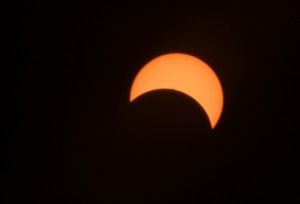Las Vegas’ history often gets buried beneath its flashy casinos and high-rise hotels. But a recently awarded grant to the City of Las Vegas aims to recover the gems of the Historic Westside, an area defined by its past and the people who live there.
The city received a $50,000 grant from the National Park Service to conduct research on the Westside to find and nominate sites eligible for the National Register of Historic Places. Protections for those sites would prohibit them from being demolished, an effort to ward off gentrification.
Near Downtown, the Historic Westside stretches from Jackson Avenue to Bonanza Road. At the end of the neighborhood lies the vacant lot where the Moulin Rouge, the city’s first racially integrated casino, formerly sat.
Diane Siebrandt, historic preservation officer of the City of Las Vegas, says the city applied for the grant in March and received its requested $50,000 in full, something Siebrandt says doesn’t happen often. The figure was determined based on the anticipated amount of research to be conducted, along with the size of the area. Siebrandt says steps to hire a team of researchers have not yet been initiated.
“We’re always looking for ways to add properties to our local register, because that’s what preserves the buildings in our city,” she says. “It was a good feeling to know that all the hard work of writing that proposal is going to pay off in the end.”
Black Las Vegas residents in the Historic Westside were segregated through Jim Crow laws and social pressures starting in the 1930s. Year after year, Black residents were pushed out of Downtown businesses and construction projects like the Hoover Dam, which hired the white workers who flocked to the region in response.
Now, the city attempts to make amends and improvements to the Westside with the Hundred Plan, an initiative launched in 2016 that prioritizes investments in the area. Goals include building and street developments, implementing more natural spaces like James Gay Park and honoring the history of the Westside.
“The city recognizes the need to engage the community in establishing context for an anchor cultural facility that can allow us to shine a spotlight on the Historic Westside,” Lisa Morris Hibbeler, chief community services officer for the City of Las Vegas, said during a September 8 meeting to discuss building a Historic Westside museum. “This does not mean that existing places or spaces are abandoned in favor of something new but rather that we work to connect important pieces of our history and create new opportunities for audiences, near and far, to experience it.”
Hibbeler said goals for the meeting were to provide context for a proposed museum and cultural art center—which would highlight the contributions of Black people in Nevada—and to receive community feedback on the project.
“We continue to make progress with the Hundred Plan in Action for the Historic Westside,” City Councilman Cedric Crear, a resident and native of the Westside, said in a statement. “These funds are the latest to be awarded to projects that will make a difference in the community as we work to preserve our history and create new opportunities.”
One step the city could take in revitalizing the area is selecting several abandoned homes in the neighborhood and repurposing them into affordable housing units. But Claytee White, director of the Oral History Research Center at UNLV Libraries, says bare-minimum improvements to the area do nothing to enhance the location’s rich history.
“I don’t want just something thrown together and cheap and ugly,” she says. “I want housing that is substantial, that is beautiful. I want a neighborhood that is attractive, that people will want to visit. I want a business district that is vibrant and viable and sustainable and beautiful and has all the amenities like any other community. I don’t want just the minimum. I want the best.”
Click HERE to subscribe for free to the Weekly Fix, the digital edition of Las Vegas Weekly! Stay up to date with the latest on Las Vegas concerts, shows, restaurants, bars and more, sent directly to your inbox!






